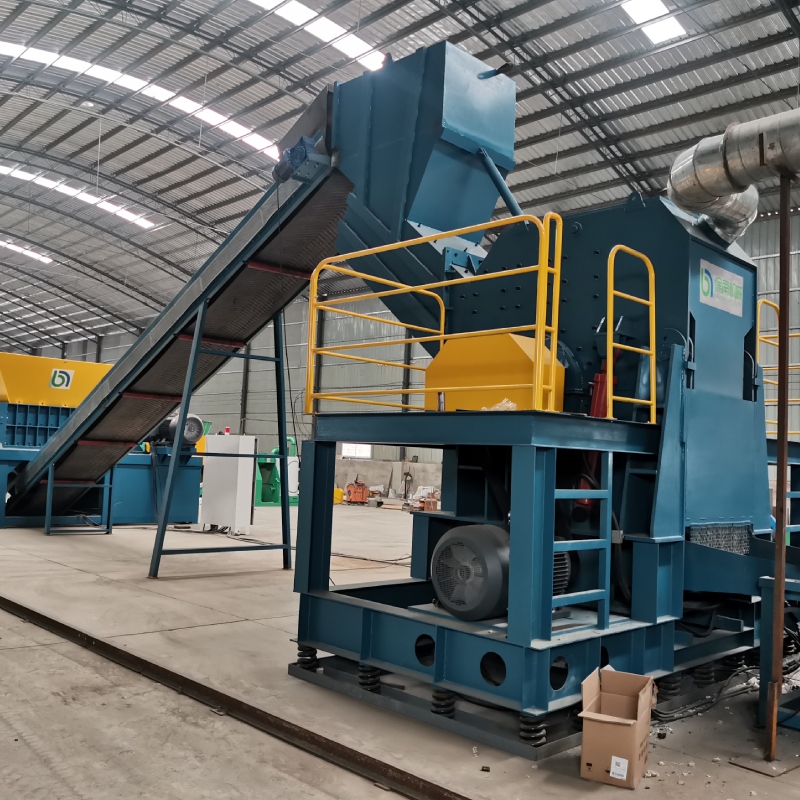Iron scrap recycling plants act as pivotal components in the sustainable management of metal waste, effectively transforming discarded iron into valuable resources. The process of recycling iron not only conserves natural resources but also significantly reduces greenhouse gas emissions and energy consumption compared to traditional metal production methods. This comprehensive guide will delve into the intricate operations, economic advantages, and environmental benefits of iron scrap recycling plants, creating an authoritative source for those interested in the industrial facets of metal recycling.

The operations within an iron scrap recycling plant involve a series of meticulous steps. The initial stage is the collection and transportation of scrap iron from various sources, including construction sites, manufacturing industries, and end-of-life vehicles. Once gathered, the scrap undergoes rigorous sorting and cleaning. Advanced technologies like magnetic separation and eddy current separators are employed to distinguish iron from other non-ferrous metals and contaminants. The sorted iron scrap is then subjected to shredding, where it is broken down into smaller, manageable pieces, enhancing the efficiency of subsequent melting processes.
Melting and refining represent the heart of the recycling operation. In large furnaces, typically electric arc furnaces, the shredded iron is melted at high temperatures. The molten metal is then purified, removing impurities such as slag and dross, resulting in a high-quality recycled metal. This refined iron is cast into slabs, billets, or ingots, ready to be repurposed into new products. This closed-loop system not only diminishes the need for virgin iron ore extraction but also aligns with circular economy principles, promoting resource sustainability.

Economically, iron scrap recycling plants offer significant cost savings and revenue opportunities. By minimizing dependence on primary raw materials, companies can drastically reduce production costs. Moreover, the volatility of raw material markets underscores the financial prudence of utilizing recycled iron, providing manufacturers with more predictable input costs. The trade of recycled iron products contributes further to economic growth; the global iron recycling market continues to expand, driven by increasing industry awareness and legislative incentives aimed at fostering recycling initiatives.
iron scrap recycling plant
Environmental benefits form a compelling case for iron scrap recycling. Recycling processes release notably lower carbon dioxide emissions compared to conventional ore extraction and iron production. Additionally, the energy required to recycle iron is significantly less, with estimates indicating up to 60% less energy consumption. This energy efficiency translates into lower fossil fuel usage, contributing to reduced environmental pollution and the mitigation of climate change impacts. Iron recycling also lessens the burden on landfills, conserving land and reducing soil and water pollution associated with metal waste.
Establishing and operating an iron scrap recycling plant requires a combination of technology, expertise, and compliance with stringent environmental regulations. Innovations in recycling technologies, such as automated sorting and advanced furnace techniques, continue to improve plant efficiency and output. Expertise in metallurgical processes ensures the production of high-quality recycled iron that meets industry standards. Compliance with environmental regulations is critical, encompassing waste management, emissions control, and health and safety protocols to maintain operational legitimacy and social responsibility.
Future prospects of iron scrap recycling plants appear promising, with trends leaning towards more integrated recycling systems and collaborations across industries to enhance recycling rates. As industries worldwide continue to pivot towards sustainability, the role of recycling plants will undoubtedly amplify, positioning them as essential components in the global transition to greener practices.
In conclusion, iron scrap recycling plants are not only economically viable but also environmentally essential for sustainable resource management. By understanding the operational intricacies, recognizing economic advantages, and appreciating environmental outcomes, stakeholders can effectively participate in and contribute to the growing domain of metal recycling. This guide serves as a testament to the potential and necessity of enhancing recycling infrastructures to meet future environmental and economic challenges, ensuring a balanced approach to resource consumption.


